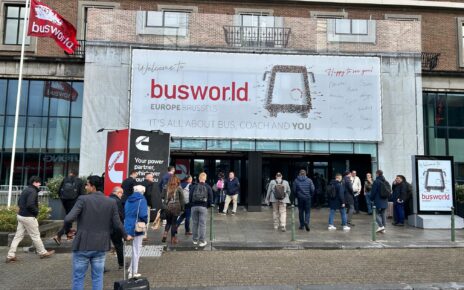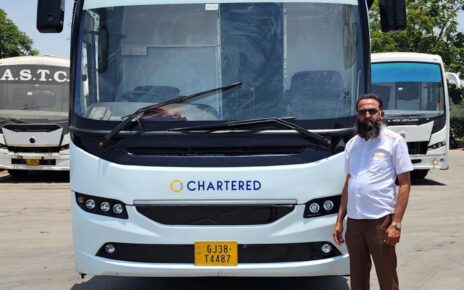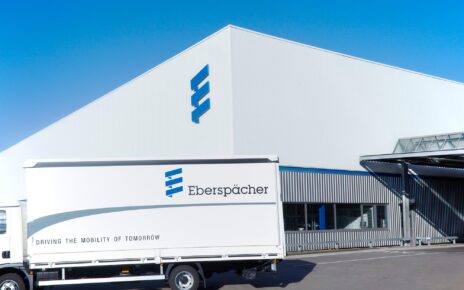
In an insightful conversation with Rajesh Rajgor, Sanyam Gandhi, Director, Chartered Speed, shares the company’s journey from its inception to becoming a major mobility player across eight states. He discusses the company’s expansion, electrification push, operational strategies, and the future of public transport in India. With a strong focus on passenger safety, technology, and long-term partnerships, Chartered Speed is redefining urban and intercity mobility.
Chartered Speed has emerged as a significant player in India’s public transportation landscape, revolutionizing urban and intercity mobility with a strong fleet of buses, a focus on safety, and a commitment to electrification. Over the years, the company has expanded strategically across multiple states, catering to diverse passenger needs while driving innovation in public transport services.
A Legacy of Growth and Expansion
Established with the vision of providing safe, efficient, and reliable transport solutions, Chartered Speed initially focused on states offering stage carriage permits. Its early operations were centered around Madhya Pradesh and Assam, avoiding contract carriage services due to regulatory complexities. However, the post-pandemic shift in transport policies, particularly the push for electric mobility and the waiver of permit requirements, opened new avenues for expansion.
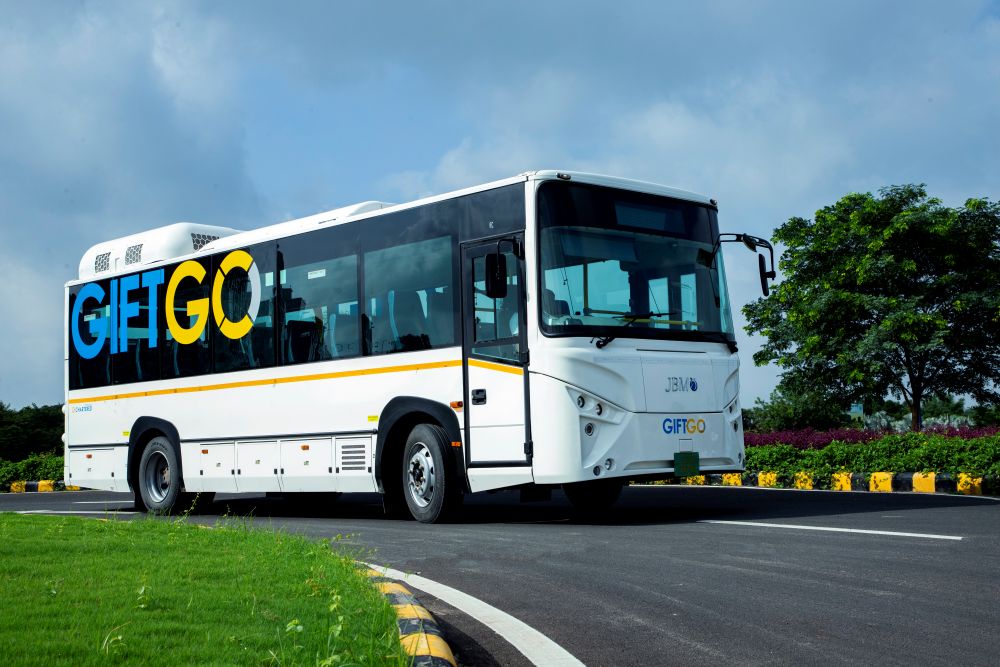
Today, Chartered Speed operates in eight states, including Gujarat, Rajasthan, Madhya Pradesh, Odisha, Assam, Meghalaya, and Arunachal Pradesh. “We have strengthened our presence in these regions and continue to build on our fleet and operational efficiencies,” says Sanyam Gandhi, Director, Chartered Speed. This steady growth has enabled the company to play a critical role in shaping India’s public transport ecosystem.
Diverse Operations and Fleet Composition
Chartered Speed’s fleet operates primarily under the Gross Cost Contract (GCC) model with State Transport Undertakings (STUs), where the company handles procurement, deployment, maintenance, and fueling or charging requirements. The fleet consists of three major categories: GCC contract buses, school and corporate transport vehicles, and intercity services under the ‘Chartered Bus’ brand.
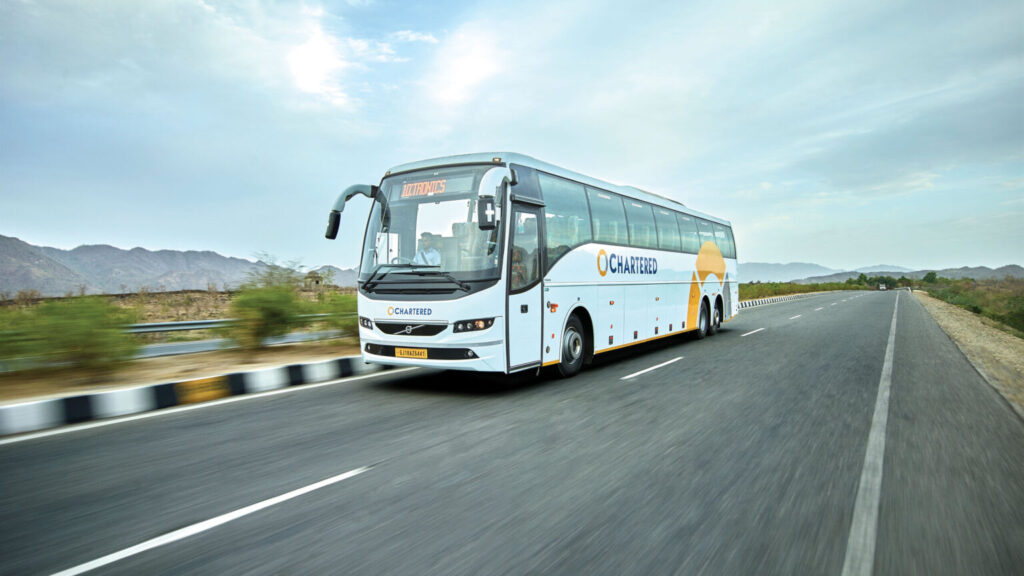
The company’s fleet comprises diesel, CNG, and electric buses, with an increasing emphasis on electrification. “New EV projects in Meghalaya and Chhattisgarh are set for deployment by the end of the year,” Gandhi notes. Despite government support for electric mobility, challenges in infrastructure and policy enforcement persist. “While central policies advocate permit-free electric bus operations, enforcement at the state level is inconsistent. Many buses stand still require traditional permits,” he adds, highlighting the gap between policy and execution.
Route and Operational Strategy
Chartered Speed has tailored its operations based on the unique mobility demands of different states. While urban routes in Gujarat and Rajasthan are transitioning towards electric buses, rural connectivity remains reliant on diesel-powered vehicles. In Odisha, for example, the government has structured a robust mobility plan linking gram panchayat, block headquarters, and district headquarters through scheduled bus services. “With over 500 buses running under OSRTC, nearly five and a half lakh passengers use the service daily,” Gandhi explains.
The company predominantly operates seater buses over sleeper variants, prioritizing safety and operational efficiency. “Nearly 98% of our fleet consists of seater buses, with only a small number of sleeper buses operating out of necessity,” Gandhi says. This preference aligns with the company’s focus on high-frequency, shorter routes rather than long-haul overnight journeys.
Commitment to Safety and Maintenance
Safety remains a top priority for Chartered Speed, with continuous investments in advanced protection systems and driver monitoring. “We’ve implemented a suite of safety features across all new buses,” says Gandhi. One such innovation is the Safety Alert Protection System (SAPS), which automatically activates a pressurized waterline in case of fire, preventing escalation even within the passenger cabin.
Beyond SAPS, the company has deployed driver monitoring systems (DMS) that provide real-time data on driver behavior, including uniform compliance and signs of fatigue. “Our dual-facing DMS cameras capture both road and driver activity, helping us analyze accidents and prevent mishaps with early warnings,” he explains.
A significant industry-first initiative by Chartered Speed was the introduction of three-point seat belts in all new buses. “This wasn’t an easy task—we had to negotiate extensively with seat manufacturers and pay a premium to introduce them in India. But today, we see the industry following our lead,” Gandhi notes. These efforts underscore the company’s unwavering focus on passenger safety.
Technological Innovations and Fleet Optimization
With the growing adoption of electric buses, Chartered Speed has turned to real-time data analytics to enhance operational efficiency. Battery performance is a key challenge, with range affected by traffic conditions, temperature variations, and passenger load. To address this, the company has implemented onboard diagnostic (OBD) devices that gather real-time data from battery management systems. “Previously, buses would sometimes run out of charge mid-route, forcing passengers to deboard. Now, our predictive technology helps adjust routes dynamically, preventing disruptions,” Gandhi explains.
Passenger convenience has also seen significant improvements. Before COVID-19, nearly 98% of bookings were done at physical counters. Today, over 75% of passengers book through the company’s mobile app, benefiting from an improved user experience, discounts, and loyalty programs. This digital shift has streamlined operations, reduced waiting times, and enhanced customer satisfaction.
Expanding Beyond Buses: Holistic Mobility Solutions
While buses remain the company’s core business, Chartered Speed envisions a broader role in mobility solutions. “If you go to Srinagar, you can cycle around Dal Lake on one of our cycles,” says Gandhi. The company also operates electric shuttle buses in areas like GIFT City and Adani Shantigram township in Ahmedabad, offering flexible booking options. “You can book a seat for an entire month or switch your return timing on the same day at no extra cost,” he explains. This adaptability has contributed to the company’s rapid growth.
From a modest start with a few buses generating ₹4 crore in revenue, Chartered Speed has already crossed ₹400 crore in revenue in the first half of this year alone. Gandhi attributes this success to the ever-growing demand for public transport. “Even with over one lakh buses in private hands, demand far exceeds supply. In cities like Ahmedabad, public bus fleets haven’t increased in years despite the population tripling.” The result is higher congestion, pollution, and productivity loss. “When I see a passenger relaxing inside a bus instead of stressing in traffic, I know we’re making a difference,” he adds.
Future Prospects and Industry Outlook
Chartered Speed sees immense potential in both public and intercity transport. “We already serve over 1.5 lakh intercity passengers daily, making us one of the top five operators in India,” Gandhi states. However, he acknowledges that government fleet replacement remains a significant priority. “The government is the biggest customer, planning to replace 1.5 lakh buses with electric ones. Even a small share of that market is huge for us.”
The company also emphasizes long-term partnerships with OEMs over price-driven decisions. “It’s not just about who offers the lowest price. We build relationships, ensuring our field technicians and drivers are well-trained in the technology they use.” Despite competition from brands like Scania and Mercedes, Chartered Speed has maintained strong ties with Volvo, ensuring high fleet uptime and passenger comfort.
When bidding for projects, the company prefers working with OEMs it already has strong relationships with. “But if we win a contract and need to adapt, we are flexible,” Gandhi says. This strategic approach, combined with the company’s commitment to innovation and service quality, positions Chartered Speed as a key player in the future of India’s public transport sector.
With its extensive fleet, focus on safety, and investment in technology, Chartered Speed is redefining mobility across India. By embracing electrification, optimizing operations, and prioritizing passenger safety, the company continues to set industry benchmarks. “The government has steered the industry in the right direction. Once the regulatory framework is streamlined, we anticipate a major surge in electric bus adoption,” Gandhi concludes. As India’s demand for public transport grows, Chartered Speed remains at the forefront, driving change and delivering seamless mobility solutions.


